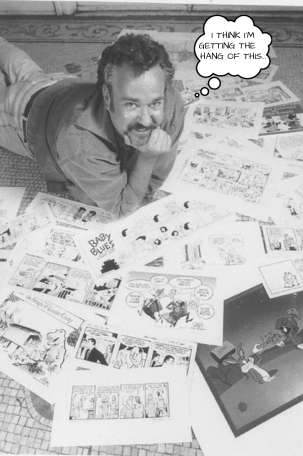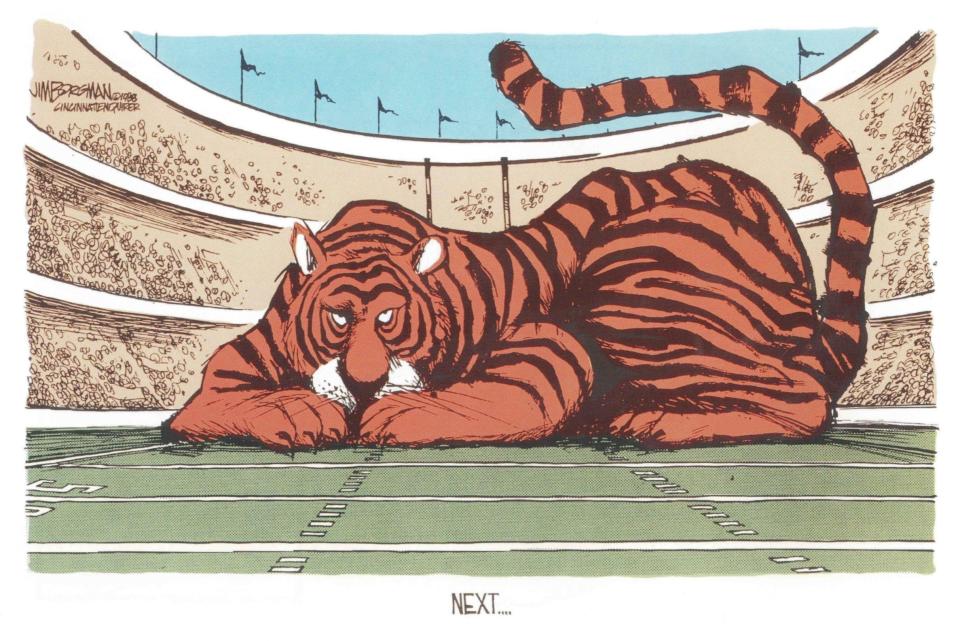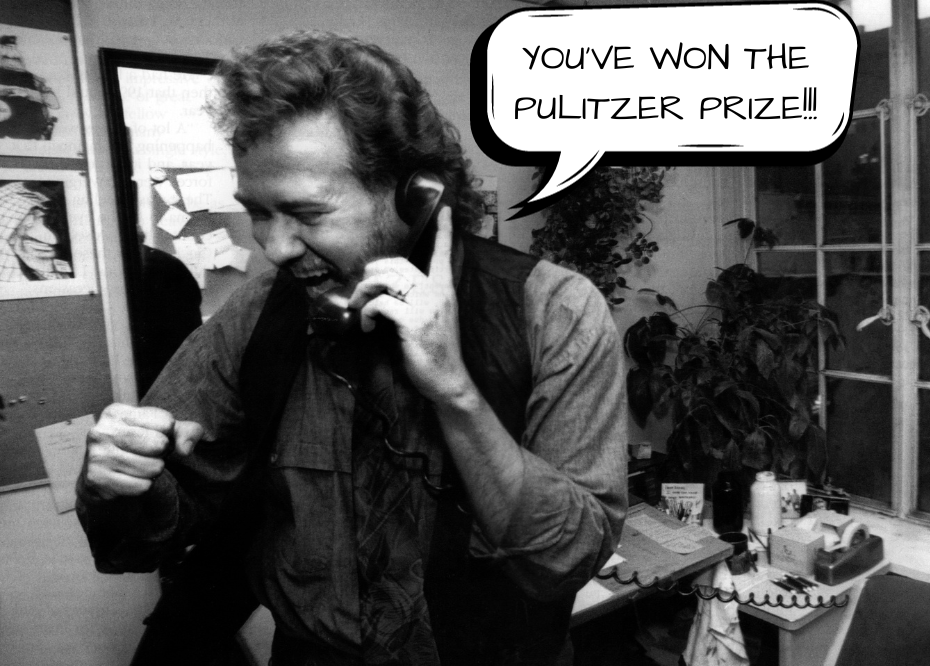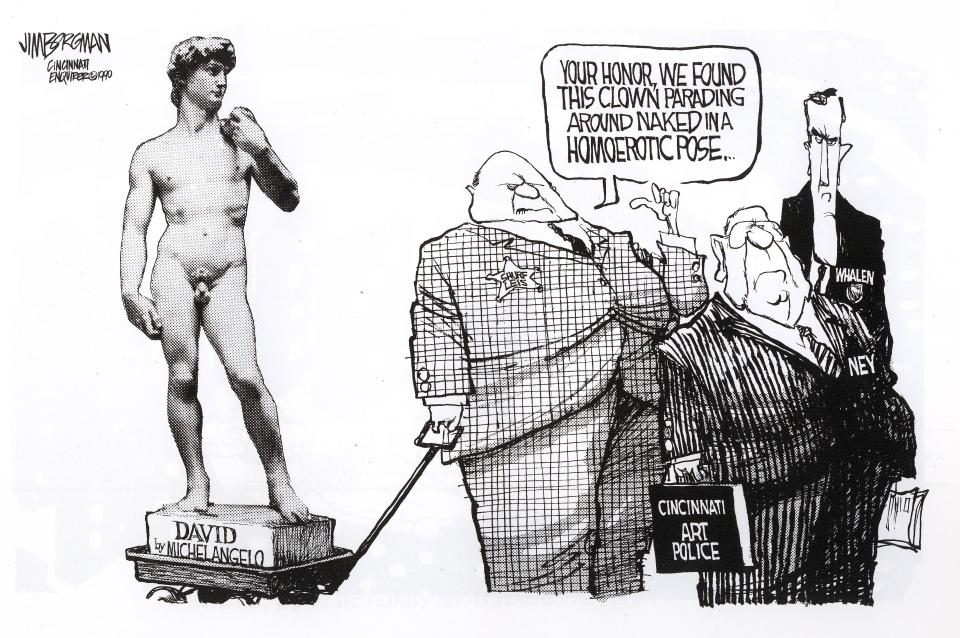'It's been a really magical ride': Jim Borgman talks 'Zits' comic strip, Cincinnati roots

- Oops!Something went wrong.Please try again later.
Jim Borgman first felt the exhilaration of having other people see his artwork when he was 5 years old.
The Cincinnati native, who would go on to illustrate the award-winning "Zits" cartoons, submitted a drawing to "The Uncle Al Show" as a kindergartener.
"They would hold up drawings that kids did and sent in, and I was always mesmerized by that," he said of the former children's TV program.
"I sent in my stuff and I saw my crayon drawing there on 'Uncle Al'... It was a moment for me," he added. "That little thrill that you get ‒ maybe we all have it in our own version – what it would be like to have other people see our stuff."
Borgman fell in love with political cartoons by reading them in The Cincinnati Enquirer. He also loved classic comic strips like "Peanuts," "Pogo" and "Calvin and Hobbes." While attending Kenyon College in Ohio, a friend "connected the dots" for Borgman, showing him that he could make a career out of art.
Borgman began drawing weekly cartoons for the school newspaper, where the thrill of others seeing his work grew.
"I'm not a person who seeks the spotlight in any other way but through my drawings," he said. "I was excited to be in people's conversations."
Borgman becomes an editorial cartoonist at The Cincinnati Enquirer
A week after graduating from college, Borgman started as The Enquirer's editorial cartoonist.
"I was scared to death," he remembered. "I had been drawing for this little college newspaper... Now I'm on stage in front of a major metropolitan newspaper audience."
Borgman brought with him a portfolio of 12-15 sketches, which he doubled in his first two weeks at The Enquirer.
"It was a thrilling and scary start, but people were patient," he said. "Cincinnatians are kind by nature, I think, and forgiving. I guess people saw someone paying attention to their town and trying to draw something lighthearted and thought-provoking about their world."

Borgman finds his voice
Borgman said he began to feel more confident in his cartoons by 1980.
"I felt like I knew what the inside of homes looked like," he explained. "I'd grown up there, and I'd moved around the city quite a bit. So, I had a feel for just how life looked through those windows. I think people picked up on that."
One cartoon that epitomized this feeling for Borgman was of the Cincinnati Bengals' tiger mascot sitting dominantly on a football field. Borgman's "Next" cartoon became a symbol of the Bengals' 1988-1989 Super Bowl run.

"It kind of became iconic, and it was everywhere the rest of that season," he said. "Suddenly it just felt like, 'Ok, we're really connected here.'"
'You've won the Pulitzer Prize'
Borgman had summitted his work for Pulitzer Prize consideration before, but his 1990 portfolio felt different.
Cartooning for The Enquirer, he tackled subjects like Pete Rose's legal woes; Bengals coach Sam Wyche barring a female reporter from the locker room; the death of Ryan White, an Indiana teenager with AIDS; and a controversial Robert Mapplethorpe art display.
"All these things were happening, and I felt in the zone," Borgman said. "I was certainly over the moon (for being a Pulitzer finalist), but in a sense I had a feeling that maybe the stars had aligned and this was my year."
Borgman won the Pulitzer Prize for editorial cartooning in 1991. He remembered that "even the voice of the operator was excited" when he received a phone call from Western Union.

"The aftermath was just so much fun. Everyone you've ever known is calling and congratulating you," he said.
A few days later, Borgman had a humorously humbling moment.
"I got a call at home, and it's this person who says, 'Hello, this is so-and-so from The New York Times,'" he recalled. "I said, 'Oh gosh, I'm just so overwhelmed. I'm surrounded by flowers and balloons and cards, and everybody is treating me like a king.
"And she said something like, 'Well that's nice. We are just calling to see if you'd like to get home delivery,'" he laughed. "Right back down to Earth."

Borgman and Jerry Scott launch 'Zits'
Borgman and "Zits" writer Jerry Scott went from friendly acquaintances to cartooning partners in March 1997. Scott joined Borgman on a trip to Sedona, Arizona, where he pitched Borgman his idea.
"He said, 'I've been thinking about a comic strip about teenagers. Here's what I've got so far,'" Borgman said.
Scott's sketches were done in a similar style to "Peanuts" characters, Borgman recalled – big heads on little bodies. Borgman went in a different direction, drawing the teens as lanky characters who took up space.
Borgman said Scott saw his drawings and said: "That's the way the strip should look."

"Zits" debuted in more than 200 newspapers that July. It is widely circulated today and has won best newspaper strip from the National Cartoonist Society three times.
"The newspaper industry was changing so much, I feel like we slipped in the door right as it was closing," Borgman said. "It's been a really magical ride."
Borgman now illustrates the "Zits" adventures of Jeremy Duncan from his home in Colorado. He and his wife left Cincinnati in 2012, after he left The Enquirer in 2008. Borgman still visits the city and his two daughters and grandchildren who live there.
"It's very much in my heart still," he said. "It'll always be home, in a way."
This article originally appeared on Cincinnati Enquirer: 'Zits' cartoonist Jim Borgman reflects on award-winning career

